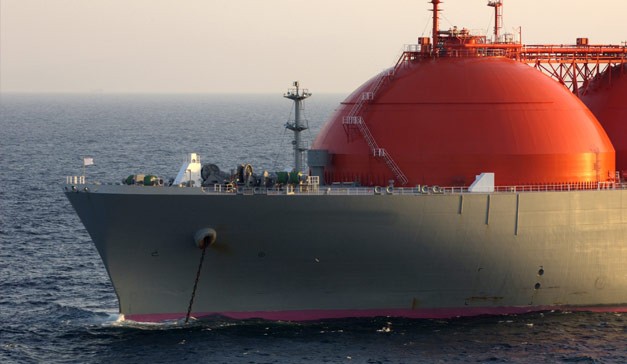Market Report Taiwan Country Risk Report Q2 2015
Post on: 16 Март, 2015 No Comment

Core Views
- Taiwan’s economy slowed in Q114 likely on the back of a moderating expansion in private consumption and exports. While we remain fairly constructive on Taiwan’s trade prospects in the near term, we do not believe that recovering demand in the US and Europe will be able to overcome the drag from China’s slowing economy, which will inadvertently weigh on the island’s economy given its heavy reliance on the mainland. We therefore are happy to maintain our below-consensus (3.2%) real GDP growth forecast of 3.0%.
- From a political perspective, the recent student protests against the trade pact with mainland China may catalyse a widening divide within the ruling Kuomintang (KMT) party, which would inadvertently lead to some instability within the political environment. In the event that the trade pact is rescinded, Taiwan could suffer longer-term economic implications stemming from not only a deterioration in ties with China, but also the inability to establish much-needed free trade agreements with its other trade partners.
- The recent acceleration in Taiwan’s consumer price inflation is more likely a result of weather-related food price inflation than a sustained pickup in economic activity. As pressures from food prices start to abate, while economic growth remains fairly moderate, inflationary pressures will remain well contained. We expect monetary conditions to remain accommodative given that the central bank remains cautious towards the island’s economic growth prospects.
Key Risks To Outlook
- Downside Risks To Growth Forecast: Should we see a re-emergence of a crisis in the eurozone, or a downward spiral in China’s economy, we can expect Taiwan to head into a sharp recession
The Taiwan Country Risk Report helps businesses with market assessment, strategic planning and decision making to promote growth and profitability in Taiwan. It is an essential tool for CEOs, Chairmen, Finance Directors/CFOs, Managing Directors, Marketing/Sales Directors with commercial interests in this emerging market.
An influential new analysis of Taiwan’s economic, political and financial prospects through end-2019, just published by award-winning forecasters, Business Monitor International (BMI).
Key Uses
- Forecast the pace and stability of Taiwan’s economic and industry growth through end-2019.
- Identify and evaluate adverse political and economic trends, to facilitate risk mitigation.
- Assess the critical shortcomings of the operating environment that pose hidden barriers and costs to corporate profitability.
- Contextualise Taiwan’s country risks against regional peers using BMI’s country comparative Risk Index system.
- Evaluate external threats to doing business in Taiwan, including currency volatility, the commodity price boom and protectionist policies.
The Taiwan Country Risk Report by Business Monitor International (BMI) includes four major sections:Economic Outlook ,Political Outlook ,Operational Risk andKey Sector Outlook .
Economic Outlook:
How will the Taiwan’ economic policy-making and performance impact on corporate profitability over 2015-2019?
BMI provides our fully independent 5-year forecasts for Taiwan through end-2019 for more than 50 economic and key industry indicators. We evaluate growth, and also forecast the impact of economic management.
Economic Outlook Contents
The Taiwan Country Risk Report features BMI’s forecasts with supporting analysis for 2015 through to end-2019, set against government views and BMI’s evaluation of global and regional prospects.
Key Areas Covered:
Data:
- Full 10-year forecasts with data — for key macroeconomic variables including GDP (real growth and per capita), population, inflation, current account balance and the exchange rate.
- BMI’s comprehensive Risk Index system — rates each country worldwide for economic and political risk, and rates the business environment, within a global and regional context.

Written Analysis:
- Economic Activity — real GDP growth, employment, inflation, consumption (retail sales and confidence).
- Balance of Payments — trade and investment, current and capital account.
- Monetary Policy — interest rate trends (bank lending and deposit rates) and inflation (producer price and consumer price).
- Exchange Rate Policy — currency controls, foreign investment flows, exchange rates and foreign exchange reserves.
- Fiscal Policy — macroeconomic strategy and policies, government finance and tax reforms.
- Foreign Direct Investment — approvals, inflows and climate.
- External Debt — debt profile (short and long-term plus public and private sector obligations).
- Global Assumptions — forecasts for each year to end-2019 covering: major commodities, growth in key regions, inflation, and interest and exchange rates, in the United States, Japan, China and the eurozone.
Key Benefits
- Rely upon BMI’s 100% independent forecast scenarios for Taiwan and underlying assumptions — we take no advertising and are privately-owned.
- Exploit the benefits of BMI’s comprehensive and reliable macroeconomic database on Taiwan, sourced and fully maintained by BMI from an extensive network of private sector, government and multilateral contacts.
- Gain key insights into the current and future direction of government economic policy, which could significantly affect your company’s business prospects, from BMI’s team of analysts and economists.
Political Outlook:
What are the political risks to doing business in Taiwan over the next 5-years?
BMI’s Taiwan country Risk Index evaluates the short- and medium-term threats to political stability.
Political Outlook Contents
- SWOT Analysis for the Taiwan Market — Political Strengths, Weaknesses, Opportunities and Threats facing Taiwan.
- Political Stability and Risk Assessment — BMI’s Risk Index assesses explicit short- and long-term risks to political stability; latest positioning and trends for Taiwan’s risk are compared with regional and global averages.
- Current Administration and Policy-making BMI assesses the threats to the continuity of economic policy, and likely changes to the business operating environment.
- Long-Term Political Outlook BMI examines the structural risks to the stability of Taiwans political system and the dominant public policy issues likely to affect decision-makers, and outlines scenarios for how the state could evolve in the medium to long term.
Key Benefits
- Benchmark Taiwan’s risk profile against its neighbours, the global and regional average, allowing easy comparison of risks between key business markets.
- Identify, evaluate and anticipate political and security risks to the business environment, and to your company’s current operations and future plans.
- Gain valuable insights into government and policy-making, through BMI’s specialist team of analysts and economists, and their network of private and public sector sources.
Operational Risk
What are the current operational risks and difficulties associated with doing business in Taiwan?
The Operational Risk section gives an evaluation of current risks and difficulties associated with operating in the market. It also provides a brief overview of the regional Operational Risk Index which benchmarks Taiwan against its neighbours.
Operational Risk Contents
The chapter provides a summary of the main threats in the country, within:
- Labour Market Risk (Education; Availability of Labour; and Labour Costs)
- Logistics Risk (Market Size and Utilities; Quality and Extent of the Transport Governance)
- Trade and Investment Risk (Economic Openness; Government Intervention; and Legal Risks)
- Crime and Security Risk (Crime; Terrorism; and Interstate Conflict risks).
The report also drills down in greater depth to address key issues in one of the following segments most critical to the market:
- Transport network, economic openness, cost and availability of labour, crime risks, bureaucratic environment, market size and utilities, and interstate conflict.
- Assess your companys exposure to country specific operational and business risks, using BMIs insight on the current dangers of operating in the market.
- Evaluate Taiwans risk profile against its regional peers, helping you understand the markets strengths and weaknesses in relation to other countries.
Key Sector Outlook*
Which industry sectors in Taiwan will grow fastest, and where are the major investment opportunities in the market?
BMI identifies investment opportunities in Taiwan’s high growth industries including automotives, defence & security, food & drink, freight transport, infrastructure, oil & gas, pharmaceuticals & healthcare and telecommunications & IT.
Key Areas Covered:
- Market Overview — Size and value of each industry, including recent sector developments and major industry key performance indicators (KPIs) that have impacted company performance.
- 5-year Industry Forecasts — Forecasts for each year over 2015-2019, using BMI’s proprietary industry modelling technique, which incorporates key domestic and international indicators — including economic growth, interest rates, exchange rate outlook, commodity prices and demographic trends — to provide fully integrated forecasts across and within each industry.
- Demand- and Supply-Side Data/Forecasts — BMI’s industry data covers both the output of each industry and the domestic demand, offering clear analysis of anticipated import/export trends, as well as capacity growth within each industry.
Key Benefits
- Target strategic opportunities in high growth industries, which are benefiting from global mega trends, and thus offer strong investment and growth opportunities.
- Compare the growth path of different industries to identify which are best placed to benefit from domestic and international economic prospects, and which have historically suffered from volatile growth trends — a key indicator of future risks.
*Not all Country Reports contain the Key Sector Outlook chapter. Please enquire above for more information.
Executive Summary
Core Views
Major Forecast Changes
Key Risks To Outlook














